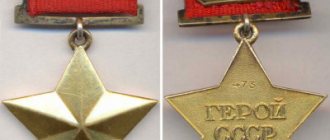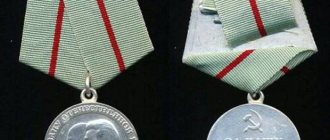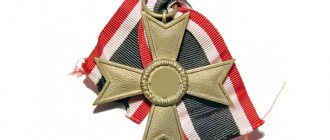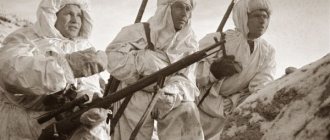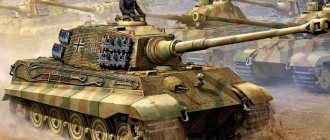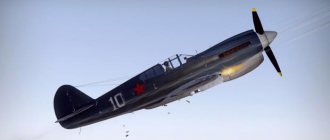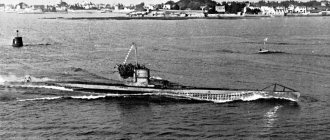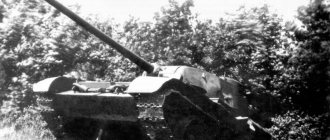Order of the Red Star officially approved in 1930, but its history began much earlier. Since 1918, the five-pointed scarlet symbol has been used by soldiers of the revolutionary army and navy. Already in the name of the insignia was its purpose - to reward soldiers and officers for military exploits. The Order of the Red Star has long remained the most honorable award for military personnel, regardless of its official hierarchy.
Symbolism
In the photo, the award badge looks like a five-pointed red star. The authors of the sketch - artist Kupriyanov and sculptor Golenetsky - used this symbol consciously. From the first days of the formation of the new Soviet state, during the years of the October Revolution and the Civil War, it was the star that was the symbol of the Red Army soldiers and the people who joined them and defended their ideals with arms in hand.
Cost of the order
With the collapse of the Soviet Union, the production of many medals and orders, including the Red Star, ceased. Now this award is valuable for antique dealers and collectors, and its price ranges from 2 to 300 thousand rubles.
This difference in price is due to the circulation of different types of stars . For example, the first series of orders was issued in a small edition and is most valued. During the Great Patriotic War, more than 2 million copies were produced, so their cost is low.
An award badge with documents costs twice as much. The appearance and personality of the recipient are of considerable importance. Only a specialist can determine the real value of the order. Therefore, when buying or selling such products, it is better to contact a professional, otherwise there is a risk of running into scammers.
What are they giving for?
The Order of the Red Star was awarded to military personnel of the army, navy, border and internal troops, KGB and internal affairs officers. Military units, enterprises, and organizations also represented him. The grounds for nomination for a state award are listed in the statute:
- Personal courage demonstrated in battle.
- Skillful organization and command of combat operations.
- Merits in ensuring state security.
- Exemplary performance of special tasks assigned by the command in peacetime.
- Excellent performance in military and political training.
- Contribution to the development of the defense industry, training of personnel for the Armed Forces of the Soviet Union.
During the Second World War, the statute was supplemented with a rule - to reward firefighters, law enforcement officers and army personnel who died in the line of duty. The award was presented to their relatives.
Since June 4, 1944, it was also awarded to candidates based on length of service - for this they had to serve for at least 15 years. This practice continued until September 14, 1957.
Kutuzova
This Soviet award appeared on July 29, 1942 (3rd degree - February 8, 1943) and is named after the great Russian commander Mikhail Kutuzov. Its uniqueness lies in the fact that the degrees were established at different times - this has never happened before in the USSR.
This award has a staff nature - it was most often awarded to army commanders, chiefs and deputy staffs. It was made according to the design of the artist Moskalev, and is one of the few insignia that have been preserved in the modern Russian award system.
Description
The Order of the Red Star looks like a five-pointed star covered with ruby enamel. There is a shield in the center; it depicts a soldier in an overcoat, a Budenovka, and a rifle. The motto “Workers of all countries, unite!” is written along the edge of the shield, and the abbreviation “USSR” is written at the bottom.
The dimensions of the medallion between the tops of the rays are 4.7-5 cm. The length varied depending on the year of manufacture. The distance from the center to the top of any beam is 2.6-2.7 cm.
On the reverse there is a pin and nut for attaching to clothing. The award badge was accompanied by a burgundy moire ribbon, in the center of which there was a longitudinal gray-blue stripe.
The order is made of silver. The content of pure metal in it was 27-28 g with a total weight of 33-34.5 g.
Over the years of its existence - which is 61 years - its design has changed only once. In 1935, changes were made to the regulations of the Red Army, followed by adjustments in design. Initially, the soldier in the center was depicted facing the viewer, but in 1936 he was turned to the right. There were now boots on his feet (in the earlier version - boots with windings).
Initially, the medallion was worn on the left chest, but since June 1943 it has been attached to the right chest, placed after the Order of the Patriotic War, 2nd degree.
Orders and medals of the Great Patriotic War - awards of 1944.
In 1944, two orders and five medals were accepted for award.
3/03/1944, for the first time during the entire war, two orders were established specifically for awarding officers of the Navy: the Order of Nakhimov and the Order of Ushakov.
Order of Nakhimov
corresponded to the military leadership order of Kutuzov, had two degrees and was awarded for leadership of successful operations of the fleet or crews of ships and formations. The Order of Nakhimov, II degree, was made of silver. The Order of Nakhimov, 1st degree, consisted of silver and gold stars, a gold medallion and profile of Nakhimov, five rubies in the rays of a silver star.
Order of Ushakov
fully corresponded to the military order of Suvorov and, unlike the Order of Nakhimov, was awarded for successful active operations at sea, as a result of which victory was won over a numerically superior enemy. The order of the second degree was made of silver and gold, the first degree - silver, gold and platinum.
From March 3, 1944, new medals were intended to award privates, sergeants and midshipmen: Nakhimov and Ushakov. These medals were awarded to employees of the Navy and maritime border units.
Nakhimov Medal
awarded for actions that contributed to the successful solution of combat missions assigned to military units and ships. The medal was made of bronze.
Ushakov Medal
was awarded for personal courage and was made of 925 sterling silver.
On May 1, 1944, the medal “For the Defense of Moscow” and the medal “For the Defense of the Caucasus”
, and on December 5 of the same year
the medal “For the Defense of the Soviet Arctic”
. The delivery was made to military personnel and civilians who took part in the defense of the respective territories. The period from June 22, 1941 to November 1944 was considered the period of defense of the Soviet Arctic. All medals were made of brass.
Modifications
In photos from different years, the Red Star looks almost the same. In fact, there are 7 of its modifications - they are purely technical, and difficult for an ordinary person to notice.
Goznak
It includes copies from 1930-1936. During this time, 781 units were produced. A distinctive feature of the medallions is a hollow star, consisting of two parts welded together. The inscriptions are also soldered.
The Red Army soldier has a gun at the ready on the central shield. He looks straight, as the Charter prescribed at that time. The “Goznak” stamp is located on the reverse, and there is also a serial number (from 1 to 781).
Without brand
The changes in the Charter, which were mentioned above, became the reason for the redesign of the order. The warrior's position before the bayonet attack changed - now his head was turned half a turn.
In this series, the star was already solid - only the shield was soldered. The numbers were printed centrally on the reverse side (814-1805). There was no mark. Such samples were produced in 1936-37.
Mondvor
From 1937 to 1941, the awards were minted by the Mint. Visually, nothing has changed - only the stamped “Mondvor” stamp appeared on the reverse.
Serial numbers in this series are 1786-11682.
Early Mint
Medallions were minted in 1938-1943. The full name “Mint” was stamped on them, so the series is separated into a separate type.
The stamping was located above the screw, and at the base of the screw there was a flange. This is the difference between copies with serial numbers 11400-254732 from other modifications.
Three rivets
With the beginning of the Second World War, the Leningrad military yard was evacuated to Krasnokamsk, where awards of the fifth type were issued. In them, the shield was attached to the base with three rivets - hence the name.
The rivets were in the center - they are clearly visible on the reverse. Their positions corresponded to 7, 12 and 5 o'clock on the dial. In this modification No. 24417-28750.
Late Mint
This modification has the largest circulation - 2.8 million units. A special feature is a threaded screw with a special recess, made of high-grade silver.
The fastening nut is also silver, but in the samples produced from February 1944, it is made of cupronickel.
The sixth modification included No. 235999-3083725.
New medallion
The seventh and final series was produced from 1952. The position of the Red Army soldier on the shield has changed slightly - the body is tilted more forward, the rifle is lowered, the right leg is turned out more than in previous examples. The bayonet also deviated slightly.
The “Mint” mark in this modification occupies two lines. Serial numbers – 3084250-3878987.
Awardees
The first recipient of the Order of the Red Star was Vasily Blukher, a Soviet military leader, statesman, and later Marshal of the Soviet Union. The order for his award was dated May 13, 1930.
Blucher has many successful military operations under his belt, one of them is the Volochaev offensive, during which Red Army units finally defeated the White Guards in the Far East. Blucher was in command then.
For the courage and heroism shown in battles, the 6th Infantry Regiment and armored train No. 8 were also awarded.
The award badge could be awarded multiple times. Among the laureates there are three and four times gentlemen. Four have been nominated for the award 6 times. This:
- Honored military pilots of the Soviet Union Filipp Onoprienko and Pyotr Panchenko.
- Lieutenant Colonel Vasily Silantiev.
- Major General Nikolai Sitsevoy.
The last award took place on December 24, 1991 - then midshipman Viktor Razumovich received the award for completing a special command assignment. It was soon abolished and was no longer awarded.
The best of the best.
0
The Order of Glory very quickly became one of the most revered awards in the army. According to its statute, heroes who accomplished a feat often received rewards practically on the battlefield. This order greatly increased the authority of the order in the eyes of the soldiers - it was almost impossible to get it “for nothing.” If we consider the conditions for receiving this award from the perspective of today, it seems that there are probably few recipients of the Order of Glory, especially taking into account the fact that it appeared after a radical turning point in the war. However, in fact, about a million Soviet soldiers were awarded the Order of Glory of the 3rd degree, more than 46 thousand of the 2nd degree, and 2,656 of the 1st degree. Full holders of the Order of Glory are heroes, about each of whom an entire film epic can be made. But among them there are people who especially stand out - the pilot of the assault aviation regiment Ivan Drachenko, the marine Pavel Dubinda and the artillerymen Nikolai Kuznetsov and Andrei Aleshin during the war years became not only full holders of the Order of Glory, but also Heroes of the Soviet Union. Among the full holders of the Order of Glory there are four women - air gunner-radio operator Nadezhda Zhurkina, medical instructor Matryona Necheporukova, sniper Nina Petrova and machine gunner Danute Staniliene.
